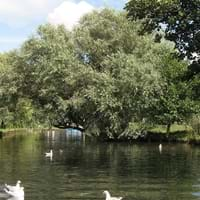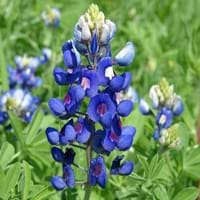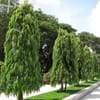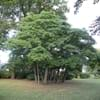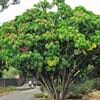Life Span
Perennial
Perennial
Type
Tree
Flowering Plants
Origin
Europe, Northern Africa, Central Asia, Western Asia
Mediterranean, North Africa, Northern America
Types
Not Available
Anthony Peak Lupine, Silver Bush, Garden Lupine, Spider Lupine, Adonis Lupine
Number of Varieties
Not Available
Habitat
River side, Riverbanks, sluggish streams and rivers, stream banks, Stream side
Pine barrens, Sandy areas
USDA Hardiness Zone
4-9
3-7
Sunset Zone
A2, A3, 1a, 1b, 2a, 2b, 3a, 3b, 4, 5, 6, 7, 8, 9, 10, 11, 14, 15, 16, 17, 18, 19, 20, 21, 22, 23, 24
1a, 1b, 2a, 2b, 3a, 3b, 4, 5, 6, 7, 14, 15, 16, 17
Habit
Oval or Rounded
Upright/Erect
Flower Color
Yellow
Blue, Pink, White
Flower Color Modifier
Bicolor
Not Available
Fruit Color
Brown
Not Available
Leaf Color in Spring
Green
Light Green
Leaf Color in Summer
Green
Green
Leaf Color in Fall
Yellow
Green
Leaf Color in Winter
Not Available
Not Available
Leaf Shape
Lanceolate
Oblovate
Plant Season
Spring, Summer
Summer
Sunlight
Full Sun
Full Sun, Part sun
Growth Rate
Very Fast
Fast
Type of Soil
Loam
Loose, Moist
The pH of Soil
Acidic, Neutral
Slightly Acidic
Soil Drainage
Average
Well drained
Bloom Time
Early Spring
Late Spring, Summer
Tolerances
Wet Site
Not Available
Where to Plant?
Ground
Ground
How to Plant?
Budding, Grafting, Seedlings
Seedlings
Plant Maintenance
Medium
Medium
Watering Requirements
Do not water frequently, Needs very little water
Form a Soil ring to water efficiently, Keep the ground moist but not water-logged, Requires a lot of watering, Water in morning to avoid prompting diseases
In Summer
Lots of watering
Lots of watering
In Spring
Moderate
Moderate
In Winter
Average Water
Average Water
Soil pH
Acidic, Neutral
Slightly Acidic
Soil Type
Loam
Loose, Moist
Soil Drainage Capacity
Average
Well drained
Sun Exposure
Full Sun
Full Sun, Part sun
Pruning
Remove damaged leaves, Remove dead branches, Remove dead flowers, Remove dead leaves, Remove dead or diseased plant parts
Prune ocassionally
Fertilizers
Apply N-P-K
All-Purpose Liquid Fertilizer
Pests and Diseases
Aphids, Caterpillars, Flea Beetles, Red blotch, Rust, sawflies
Aphids, Fusarium wilt, Root rot, Thripes
Plant Tolerance
Drought, Full Sun, Heat And Humidity, Wet Site
Drought
Flower Petal Number
Not Available
Single
Foliage Texture
Fine
Medium
Foliage Sheen
Matte
Matte
Attracts
Not Available
Bees
Allergy
Rhinitis
Abdominal pain, Asthma, Nausea, Swelling in the face, Vomiting
Aesthetic Uses
Not Used For Aesthetic Purpose
Showy Purposes
Beauty Benefits
Not Available
Not Available
Environmental Uses
Air purification
Air purification
Medicinal Uses
Anodyne, anti-inflammatory, Antirheumatic, Antiseptic, Astringent, Hypnotic, Sedative
Anthelmintic, Diuretic, Treatment of ulcers
Part of Plant Used
Bark, Leaves
Flowers, Seeds
Other Uses
Charcoal, Paper pulp
Showy Purposes, Used as Ornamental plant, Used for fragrance
Used As Indoor Plant
No
No
Used As Outdoor Plant
Yes
Yes
Garden Design
Feature Plant, Shade Trees, Water Gardens
Bedding Plant, Container, Feature Plant, Foundation, Rock Garden
Botanical Name
SALIX alba
Lupinus
Common Name
White Willow
Hybrid Lupine
In Hindi
White Willow
वृक संयंत्र
In German
Oiite Oilloo
lupine
In French
Le saule blanc
usine de lupin
In Spanish
Le saule blanco
planta de lupino
In Greek
Λευκή ιτιά
φυτό λούπινο
In Portuguese
O salgueiro branco
tremoço planta
In Polish
wierzba biała
łubin roślin
In Latin
Populus alba
Plinio herba
Phylum
Tracheophyta
Magnoliophyta
Class
Magnoliopsida
Magnoliopsida
Order
Malpighiales
Fabales
Family
Salicaceae
Fabaceae
Clade
Angiosperms, Eudicots, Rosids
Not Available
Tribe
Not Available
Not Available
Subfamily
Not Available
Faboideae
Season and Care of White Willow and Lupine
Season and care of White Willow and Lupine is important to know. While considering everything about White Willow and Lupine Care, growing season is an essential factor. White Willow season is Spring and Summer and Lupine season is Spring and Summer. The type of soil for White Willow is Loam and for Lupine is Loose, Moist while the PH of soil for White Willow is Acidic, Neutral and for Lupine is Slightly Acidic.
White Willow and Lupine Physical Information
White Willow and Lupine physical information is very important for comparison. White Willow height is 2,290.00 cm and width 1,220.00 cm whereas Lupine height is 2.95 cm and width 1.50 cm. The color specification of White Willow and Lupine are as follows:
White Willow flower color: Yellow
White Willow leaf color: Green
Lupine flower color: Blue, Pink and White
- Lupine leaf color: Light Green
Care of White Willow and Lupine
Care of White Willow and Lupine include pruning, fertilizers, watering etc. White Willow pruning is done Remove damaged leaves, Remove dead branches, Remove dead flowers, Remove dead leaves and Remove dead or diseased plant parts and Lupine pruning is done Prune ocassionally. In summer White Willow needs Lots of watering and in winter, it needs Average Water. Whereas, in summer Lupine needs Lots of watering and in winter, it needs Average Water.
